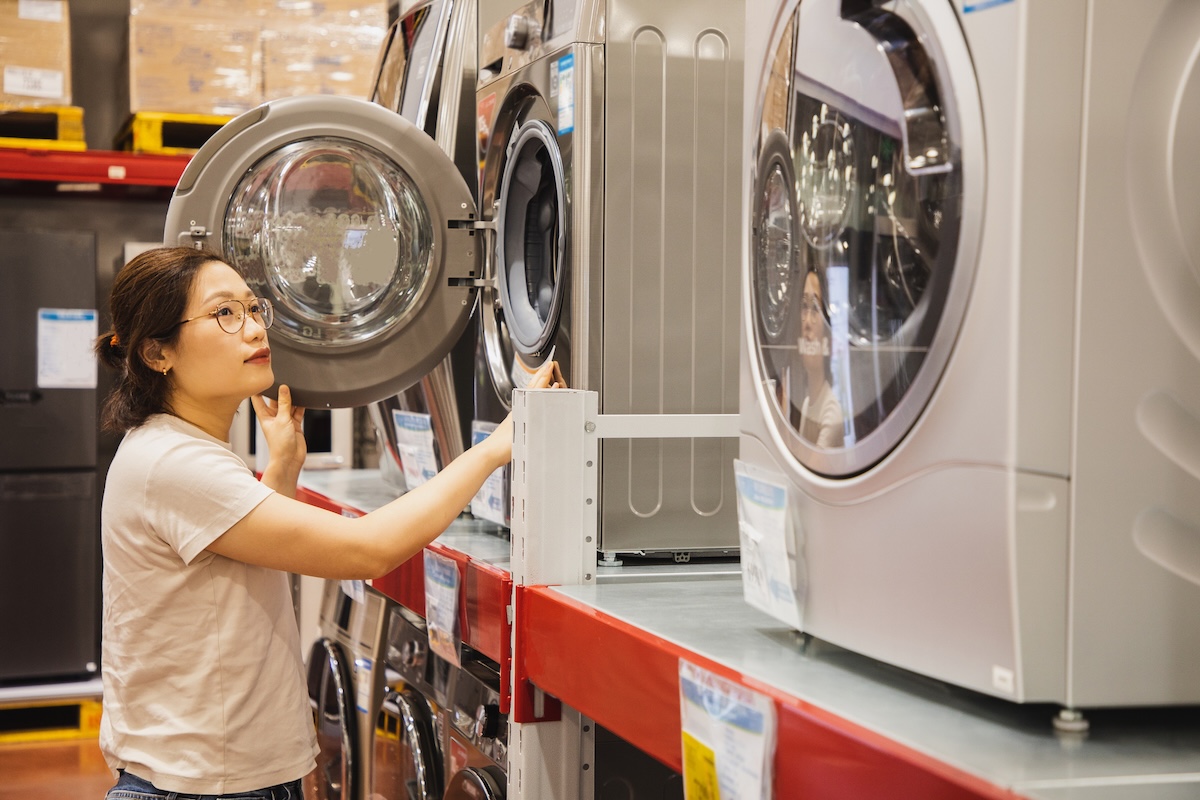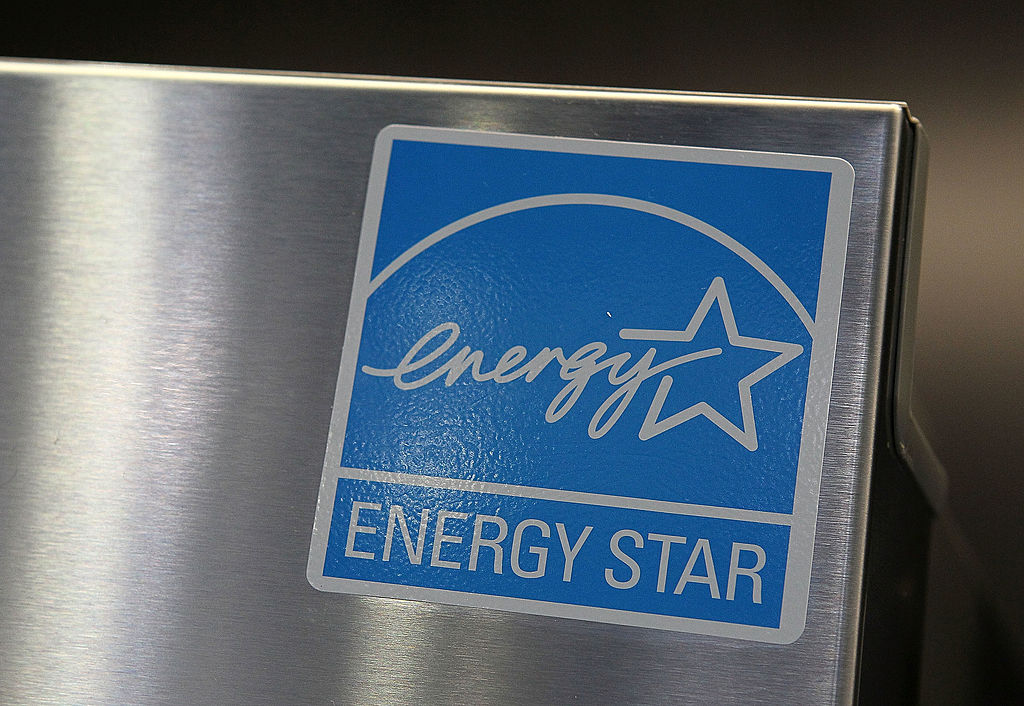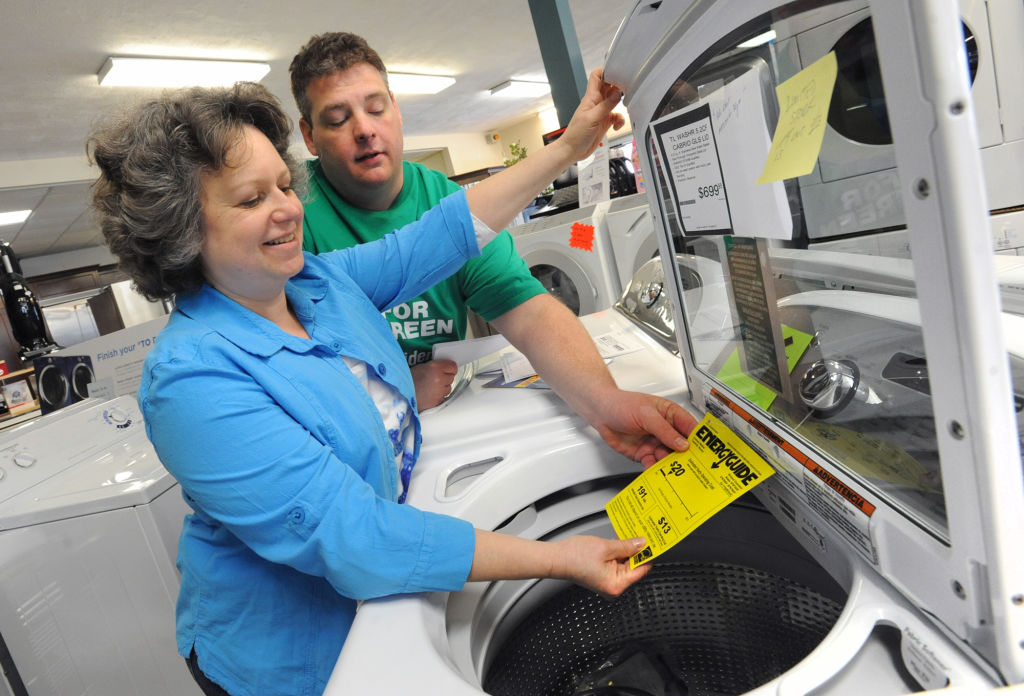

We may earn revenue from the products available on this page and participate in affiliate programs. Learn More ›
As one of the most well-known energy efficiency programs in the country, Energy Star helps consumers save money while saving energy. After existing for more than 3 decades, the program’s future is in jeopardy as a result of the current administration’s reorganization plan for the Environmental Protection Agency (EPA) that would eliminate this popular public-private partnership program.
These Energy Star cuts could make it more difficult for consumers to identify energy-efficient appliances and other household products. They also could lead to higher energy consumption, and therefore, a rise in monthly utility bills if consumers end up purchasing less efficient products.
Here we’ll look at how the program works, what it could mean for consumers if the label no longer exists, and how you can still shop for the most energy-efficient products in a world without Energy Star.

How the Energy Star Program Works
As a joint initiative of the Department of Energy (DOE) and EPA, the Energy Star program engages thousands of organizations, including manufacturers and retailers, as voluntary partners to deliver cost-saving and energy-efficient solutions that protect the environment, improve air quality, and protect public health. Since its inception in 1992, Energy Star and its partners have helped American families and businesses save 5 trillion kilowatt-hours of electricity, avoid more than $500 billion in energy costs, and achieve 4 billion metric tons of greenhouse gas emissions reductions.
The government collaborates with industry representatives to set energy efficiency specifications for more than 75 product categories, including appliances, electronics, office equipment, lighting, and HVAC equipment. These requirements include the amount of energy consumed when a product is turned off, the inclusion of a low-power or “sleep” mode, and a minimum efficiency rating when the product is operating. Manufacturers whose products meet or exceed the standards can choose to display the Energy Star logo on those products.
Why the Label Is Important
According to a recent survey, the blue Energy Star label is recognized by 89 percent of American households as symbolizing energy efficiency, environmental consciousness, and financial savings. Consumers look to the Energy Star label as a credible source of unbiased information so they can make well-informed purchasing decisions.
Additionally, consumers can qualify for rebates and tax credits for Energy Star-certified products, helping to save additional money on top of lower utility bills. In fact, EPA estimates that the program saves a typical household about $450 on energy bills each year.
Without the Energy Star program, over time there will no longer be products sold that contain this notable sticker. With appliances accounting for more than 20 percent of home electric usage, consumers might be hard-pressed to decipher the best products to buy for their home.
Cutting the Energy Star program would make it much harder for customers to make energy-efficient decisions, says Gilbert Michaud, PhD, assistant professor in the School of Environmental Sustainability at Loyola University Chicago, who leads the Michaud Energy Policy Research Group. “Consumer confusion will rise,” he warns. “While state agencies or third-party entities could step up as certifiers of energy-efficient appliances, it would take great time, money, and coordination to build up a similar program. In turn, this could make it harder for us to meet climate and decarbonization goals.”

Alternative Options to Find Efficient Products
In April, a group of more than 1,000 manufacturers, building owners, and small businesses signed a letter asking EPA administrator Lee Zeldin to keep the program. There has also been a proposal to move the program to DOE. We will continue to track whether Energy Star stays or goes.
In the meantime, it’s important to plan for a world without Energy Star. While it might be challenging, there will still be ways to find the most energy efficient products available. Here are some tips to keep in mind when shopping for new appliances in case of Energy Star cuts.
1. Review manufacturer ratings.
Reputable brands provide detailed energy specifications for their products, such as Seasonal Energy Efficiency Ratio 2 (SEER2), Heating Seasonal Performance Factor2 (HSPF2), and Annual Fuel Utilization Efficiency (AFUE). “These measurements, regulated by DOE, are not vanishing, and are more precise than the Energy Star brand itself,” says Alex Atkinson, HVAC expert at Super Brothers in California. “For example, a SEER2-rated central air conditioner of 16 or higher is extremely efficient, and furnaces with ratings above 95 percent AFUE consume very little fuel.”
2. Turn to third-party certifications.
The Consortium for Energy Efficiency has its own energy efficiency standards, although it doesn’t independently test or certify products like Energy Star does. Also, organizations like the Association of Home Appliance Manufacturers (AHAM) and other consumer advocacy groups might step in to offer independent efficiency test data in place of Energy Star.
3. Compare EnergyGuide labels.
You might have noticed the bright yellow labels affixed to most new refrigerators, washers, dryers, dishwashers, water heaters, furnaces, and other products. Mandated by the government, EnergyGuide labels provide a standardized comparison of estimated annual energy consumption and operating costs of each product. Try comparing products of similar sizes and features based on this data while shopping.

4. Contact utilities.
Calling and asking utilities about qualifying appliances is another option. Utilities currently offer rebate and efficiency programs based on Energy Star data, so without the program, they will need to set their own energy-efficiency benchmarks. Some already rely on third-party certified databases like the Air Conditioning, Heating, and Refrigeration Institute (AHRI) Directory that verifies test data submitted by manufacturers, says Atkinson.
5. Look for industry-led certification programs.
We might also see more adoption of industry-led certification programs, suggests David Hunt, chief operating officer at Versys Media in New York City, who works with retailers and e-commerce platforms to apply filterable sustainability attributes in their product data to help users prioritize efficiency. “Appliance manufacturers may emphasize ISO standards or create alliances to maintain public trust,” says Hunt. “In digital environments, retailer-side trust seals or in-house energy scores may be common.”
6. Watch for market-driven digital tools.
Even without a central label, consumers can still be empowered by transparent, accessible data delivered through AI-enabled smart tech tools, says Peter Barnett, VP of product strategy at Action1 in Houston, Texas. “Retailers could start integrating energy efficiency filters directly into their e-commerce platforms, powered by live databases or integrations with manufacturers,” says Barnett. “I also believe we’ll see the rise of independent, tech-driven certification platforms, apps, or plug-ins that let consumers scan appliances in-store or online and instantly view real-world energy use, environmental impact, and cost savings over time.”
7. Rely on online reviews.
Consumers can also read product reviews and rankings from a variety of sources, such as Consumer Reports, to help identify the most energy efficient products.
